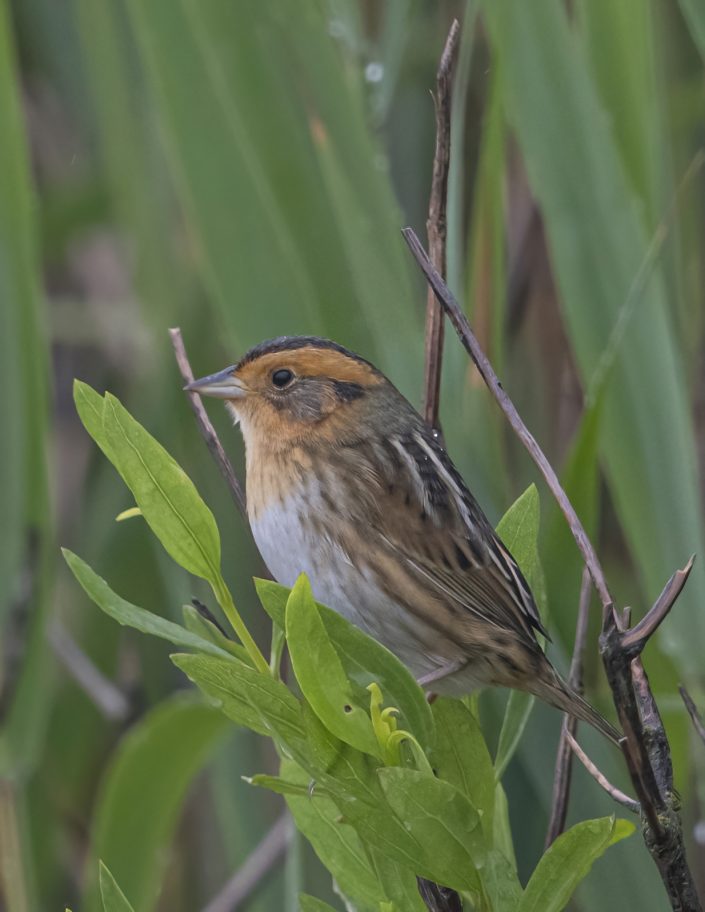Salt Marsh Restoration Project to Benefit Imperiled Marsh Birds
by Meghan Kolk, Wildlife Biologist

The Conserve Wildlife Foundation of New Jersey is working on a new project starting this winter to restore habitat for two species of imperiled marsh birds, the eastern black rail (Laterallus jamaicensis jamaicensis) and the saltmarsh sparrow (Ammospiza caudacuta). CWFNJ has partnered with the U.S. Fish and Wildlife Service (USFWS) on a three-year project to identify potential habitat restoration sites, conduct outreach to landowners, and implement conservation practices recommended for the target species. Outcomes of the project will include at least three habitat management plans and restoration of at least twenty-five acres of wetland and/or salt marsh habitat utilizing techniques in the Black Rail and/or Saltmarsh Sparrow Conservation Plans developed by the USFWS.
The eastern black rail is federally listed as threatened under the Endangered Species Act (ESA) by the USFWS and State- listed as endangered in New Jersey. The saltmarsh sparrow is under review for potential listing under the ESA, is a State species of special concern, and is identified as one of the highest conservation priorities in the northeastern United States. Both species are “Flagship Species” of the Atlantic Coast Joint Venture (ACJV), a regional partnership that is leading a coordinated coastal marsh restoration and protection effort across the Atlantic Flyway.
Black rail and saltmarsh sparrow populations are both in steep decline due to historical losses of salt marshes to coastal development and also marsh degradation from ditching, draining and other alterations. They now only occur in small populations occupying highly fragmented marsh patches in a limited coastal range. Populations are now susceptible to sea level rise, increased flooding events, more frequent coastal storms, and marsh erosion due to climate change. Without management and restoration interventions these species are in danger of extinction.
According to the ACJV, in order to keep these species from extinction, we must employ habitat conservation strategies which include restoring and enhancing degraded salt marshes, protecting marsh migration zones, building marsh resistance through dredged material, and facilitating marsh migration. Some of the restoration and enhancement techniques listed in the Saltmarsh Sparrow Conservation Plan include removal of tidal restrictions to restore tidal flow, remediation of ditches and dikes to improve hydrology, creation of runnels to improve drainage, sediment application to increase marsh elevation, creation of living shorelines to reduce marsh loss, prescribed fire to improve habitat quality, invasive species control, and removal of dams to improve downstream sediment flow.
Strategies to restore and protect tidal salt marsh (specifically high marsh where nesting occurs) will benefit both black rails and saltmarsh sparrows. However, unlike saltmarsh sparrows that are restricted to this habitat, black rails can occur anywhere suitable conditions are met, including a variety on non-tidal inland freshwater wetlands. Since black rails are experiencing steep declines in tidal salt marsh systems, the value of non-tidal habitats to sustain their population is significant. Therefore, the Black Rail Conservation Plan includes strategies to create new non-tidal wetland habitat and promote targeted impoundment management that will likely be critical to conserving the species.
CWFNJ is excited to be a partner on this project because these two species are in dire need of conservation efforts, but also because salt marsh habitats are among the most important habitats for birds along the Atlantic Coast. In addition to providing major benefits to birds and other wildlife, salt marsh restoration provides a direct benefit to people by reducing flooding, improving water quality, and supporting tourism, recreation, fishing and hunting.
Discover more from Conserve Wildlife Foundation of NJ
Subscribe to get the latest posts sent to your email.